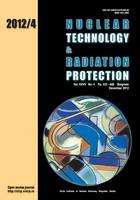
PROTON THERAPY MONTE CARLO SRNA-VOX CODE

Vol.
XXVII, No. 4, Pp. 333-408
December 2012
UDC 621.039+614.876:504.06
ISSN 1451-3994
Pages: 355-367
Authors: Radovan D. Ilić
Abstract
The most powerful feature of the Monte Carlo method is the possibility of simulating all individual particle interactions in three dimensions and performing numerical experiments with a preset error. These facts were the motivation behind the development of a general-purpose Monte Carlo SRNA program for proton transport simulation in technical systems described by standard geometrical forms (plane, sphere, cone, cylinder, cube). Some of the possible applications of the SRNA program are: (a) a general code for proton transport modeling, (b) design of accelerator-driven systems, (c) simulation of proton scattering and degrading shapes and composition, (d) research on proton detectors; and (e) radiation protection at accelerator installations. This wide range of possible applications of the program demands the development of various versions of SRNA-VOX codes for proton transport modeling in voxelized geometries and has, finally, resulted in the ISTAR package for the calculation of deposited energy distribution in patients on the basis of CT data in radiotherapy. All of the said codes are capable of using 3-D proton sources with an arbitrary energy spectrum in an interval of 100 keV to 250 MeV.
Key words: Monte Carlo code, 3-D geometry, CT, patient anatomy, proton dose, therapy planning
FULL PAPER IN PDF FORMAT (1,75 MB)